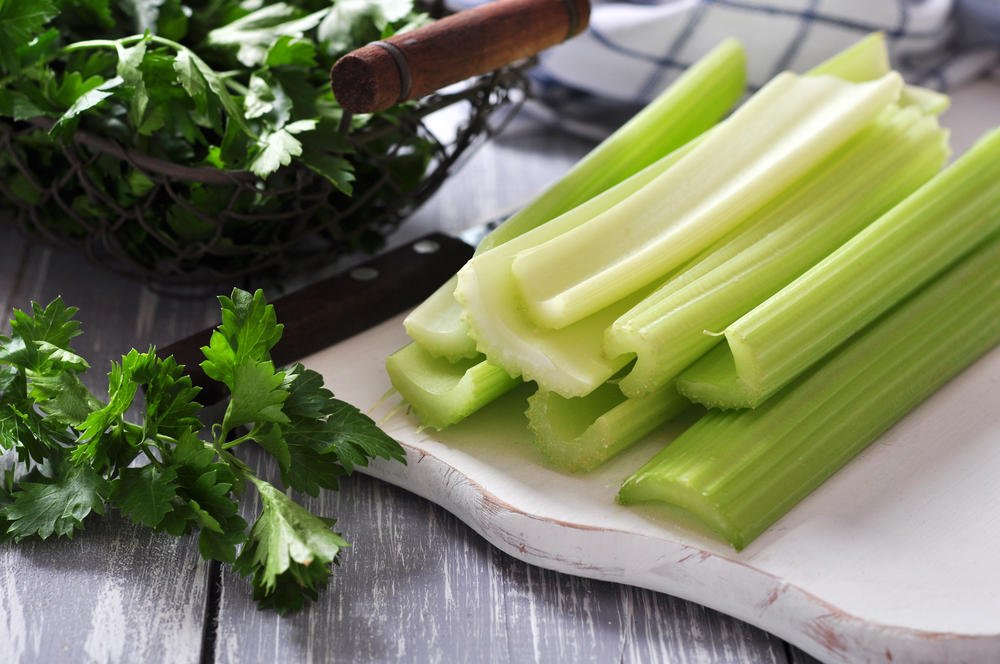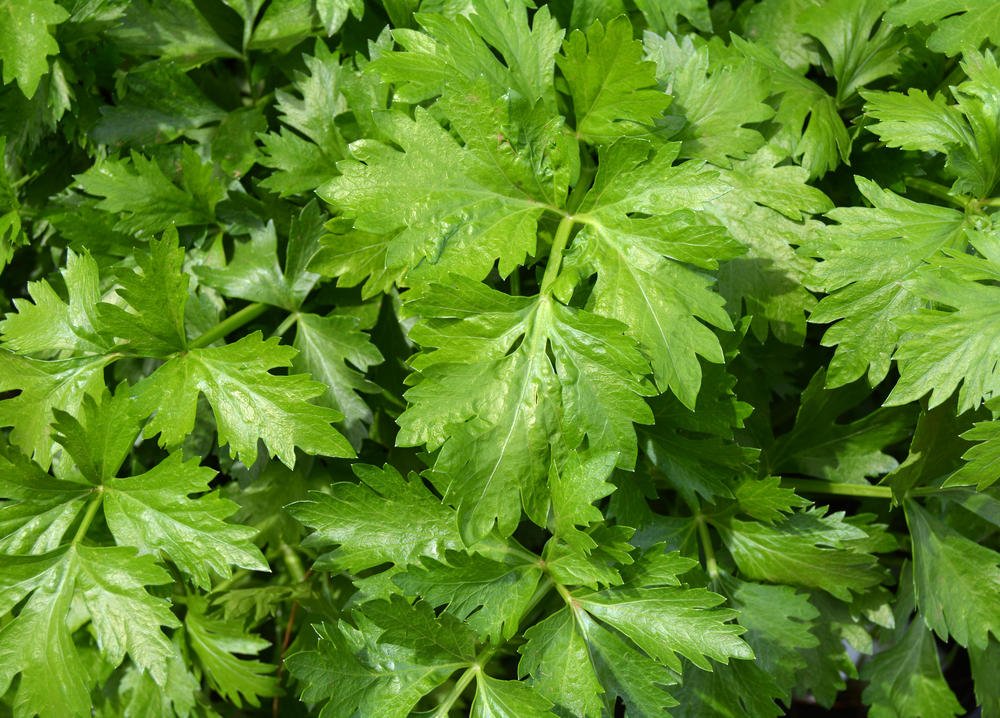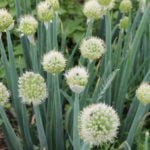The newcomer from the Mediterranean, celery, is now firmly established in our kitchens, having won its place thanks to its specific pleasant aroma and its excellent taste and medicinal qualities.
Celery is a biennial vegetable plant, in the first year of cultivation forming a rosette of glossy dark green leaves, sometimes fleshy petioles, depending on the variety or root crop. In the second year after sowing, celery leaves grow back in early spring, a straight stem is formed, the height of which, depending on the variety, is 30-100 cm (1-3.3 feet), and an umbrella inflorescence. Celery blooms by mid-July and early August, its seeds ripen. Almost immediately after this, the plant dies.
Cultivation celery
Late varieties of leaf and petiole celery and celery root are grown only in seedlings, the first two early-maturing types can be sown directly in the garden.
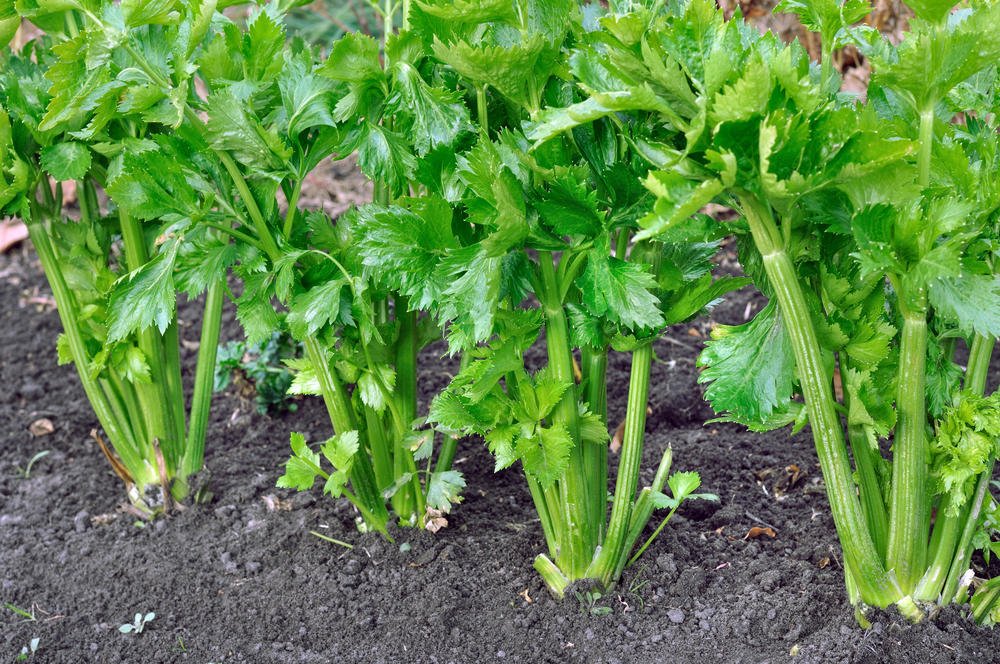
Planting celery in the ground should be done as early as possible, but not before April 20. Previously, the seeds need to be soaked for a day in water at room temperature, this will accelerate germination, and then sow to a depth of about 0.5-1 cm (0.2-0.4 inches) in pre-prepared wells (grooves).
The cultivation of celery seedling method
Celery is sown in seedlings in early March, seedlings appear in about a month. It is best to sow celery in containers filled with a light soil mixture consisting of 3 parts peat, 1 part humus, turf and sand. For every 10 kg (22 pound) of this mixture, add 20 g (0.7 ounce) of urea and a glass of wood ash.
To get more friendly and strong shoots, celery seeds need to be stratified: put them in a damp cheesecloth, keep at room temperature for about 6-7 days, and put them in the refrigerator for 12-14 days (on the lower shelf). Only after all these steps are the seeds sown.
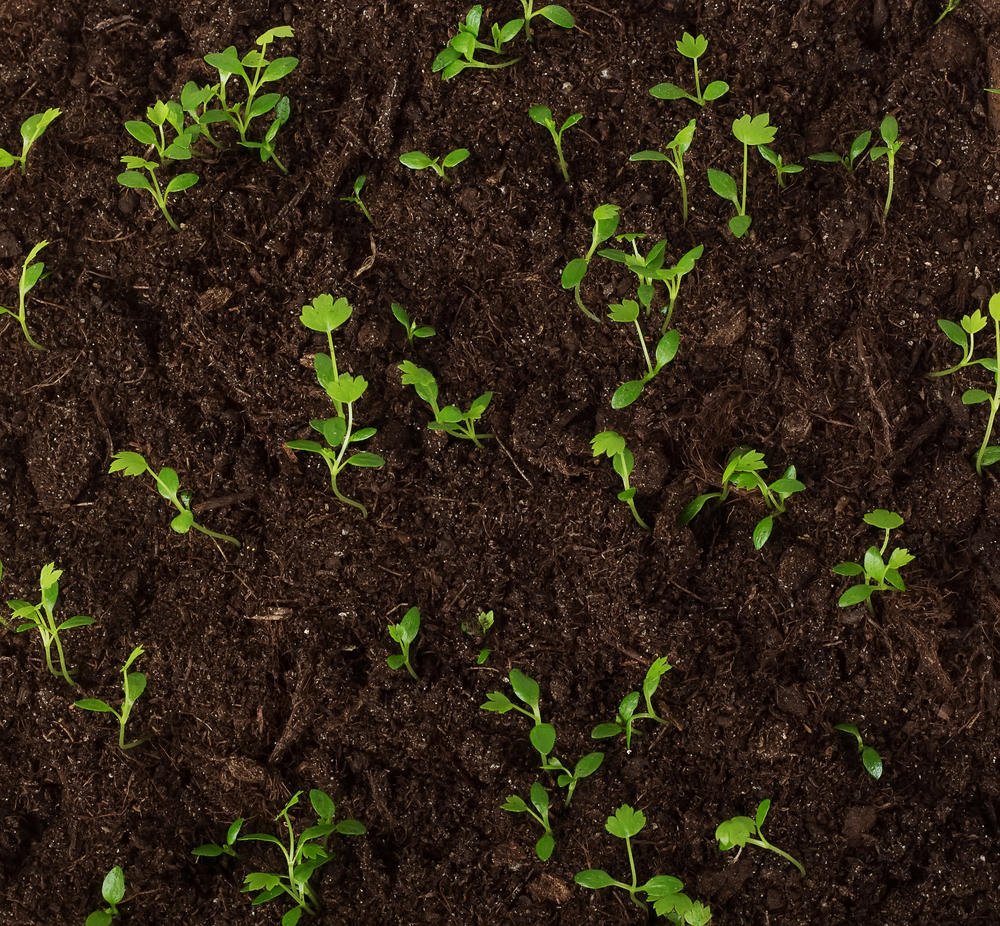
Immediately before sowing, the soil should be thoroughly watered. When the moisture is absorbed, sprinkle the celery seeds (past stratifications are buried to a depth of 0.5 cm (0.2 inches) seeds without pretreatment are left on the surface, without covering them with earth) and, covering the container with a film on top, leave at room temperature. Before germination, as the soil dries, it must be moistened from the sprayer with warm, pre-settled water. About two weeks after sowing the seeds, the soil should be sprayed.
Immediately after the celery germination, lower the temperature in the room with seedling containers to a level of +13 °to+16 °C (55.4-60.8°F). With the appearance of the first real leaves, the seedlings dive 14 days before planting in solid ground. When diving seedlings, be careful not to damage the taproot of the plant, otherwise the roots will grow ugly and small. For permanent seedlings, celery root is planted by the end of May.
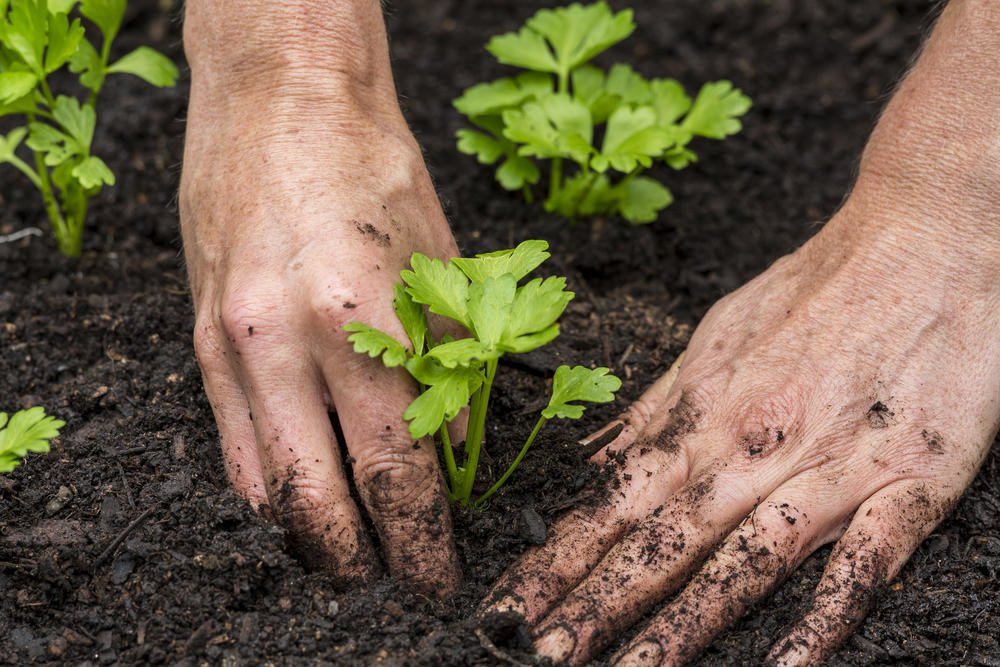
You can grow celery seedlings without picking, but in this case it will grow weaker and take root worse when transplanting.
If you do not know how to grow celery seedlings, then you can buy it, but remember: a good planting material is a plant that reaches a height of 13-15 cm (5.1-5.9 inches), with a strong root system and four to five leaves.
Planting celery
Celery prefers humus-rich light sandy loam neutral soil and open, sunny spaces, and its predecessors can be any vegetable crops. Since autumn, humus must be added to the land intended for planting celery. Planting celery in the open ground begins from the second decade of May, planting according to the scheme 20×20 cm (7.8×7.8 inches) in rows or between beds of onions, garlic, potatoes, cabbage, cucumbers, etc. Vegetables will benefit from such a neighborhood, because the strong smell of celery deters many pests.
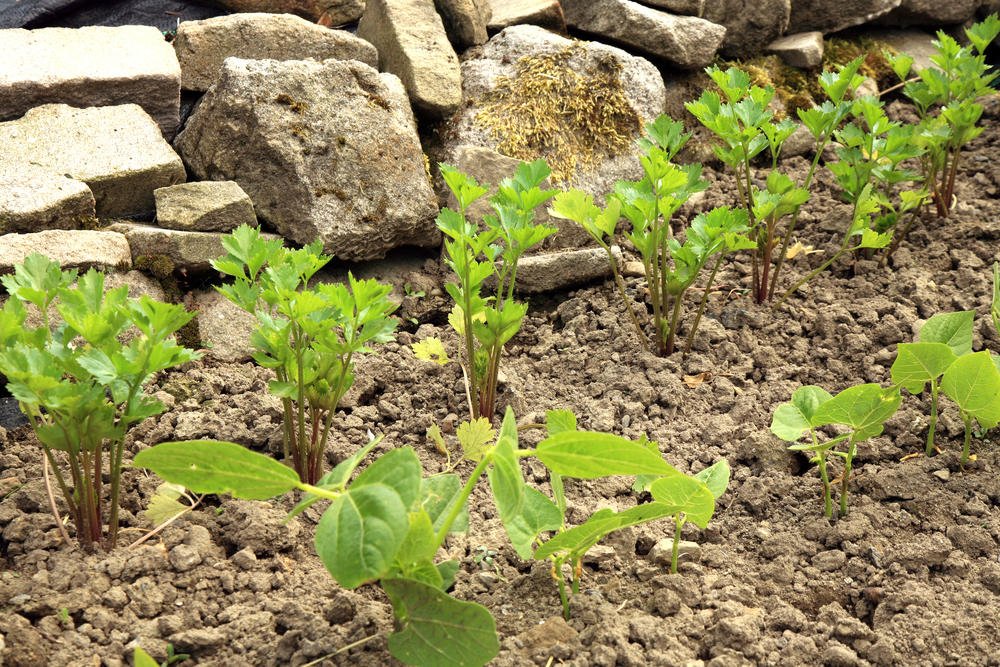
At the time of planting, a handful of humus and ash should be poured into each hole, and the celery seedlings should be buried knee-deep in the cotyledon. Immediately after transplanting, celery seedlings are well watered immediately after tillage. After that, you need to make a shadow with wet paper.
Caring for celery
Celery care consists in weeding, timely watering and fertilizing. So, in order to prevent the evaporation of moisture and provide the roots of the plant with a large amount of oxygen, immediately after planting celery, the soil around it must be mulched with peat, sawdust or simply mown grass.
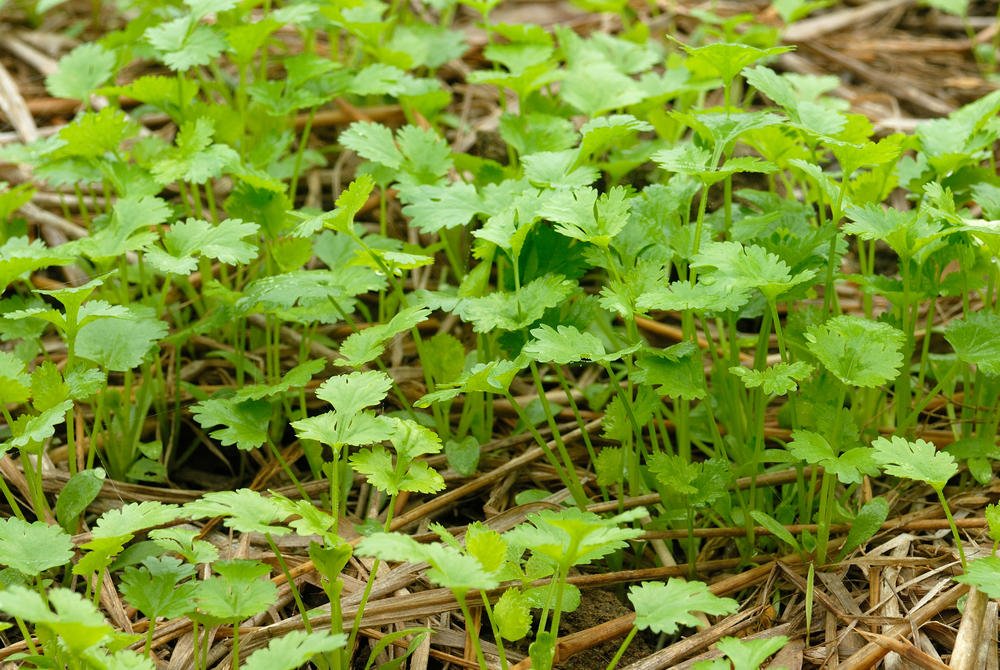
About a week and a half after planting, celery is fed with a complex fertilizer. Repeat the feeding again-in two weeks. If the celery leaves are pale, then the plant should be fertilized with urea, diluting 0.5 g (0.01 oz) of powder in 1 liter of water.
When growing celery of different varieties, the care of the plants should also be different. In addition to a number of the above-mentioned agricultural activities, three weeks before the harvest, the celery petiole plants must be produced by high hilling. This will help to whiten the stems, reduce the amount of pungent-smelling essential oils in them, as well as the disappearance of bitterness.
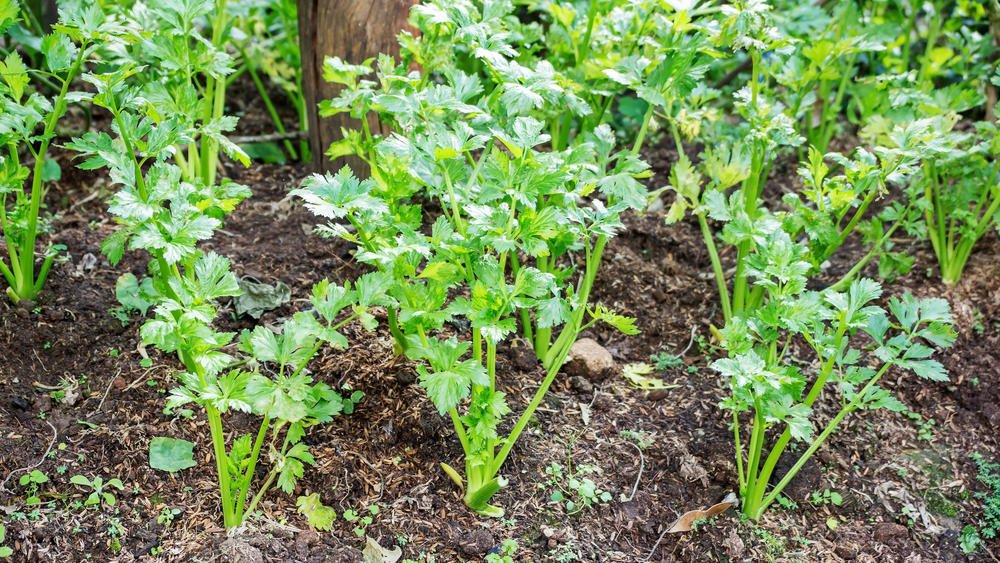
Celery root care should also include a number of specific techniques. To get the best quality root, in the middle of summer, it is necessary to release its upper part from the ground, breaking off the side roots. Thanks to this simple agrotechnical technique, the plant forms as large a root as possible in the fall. To strengthen the growth of the celery root, you should press its leaves to the ground, the petioles crack during this procedure, which only benefits the plants and does not harm the growth of the root.
All types of celery should be cleaned in October. The petiole and root are completely removed, and the leaf can be used for distilling greens in winter, for which the plants are dug up with a small lump of earth and planted in small pots.
The types and varieties of celery
There are three types of celery: self-blanching or yellow (leaf celery), green or pascal celery, and common celery: they were obtained by selection from a wild form that was a hard, thin, non-edible root.
Celeriac
The most important thing that celery cultivates is a root vegetable that reaches a mass of 500-900 g (17.6-31.7 oz).
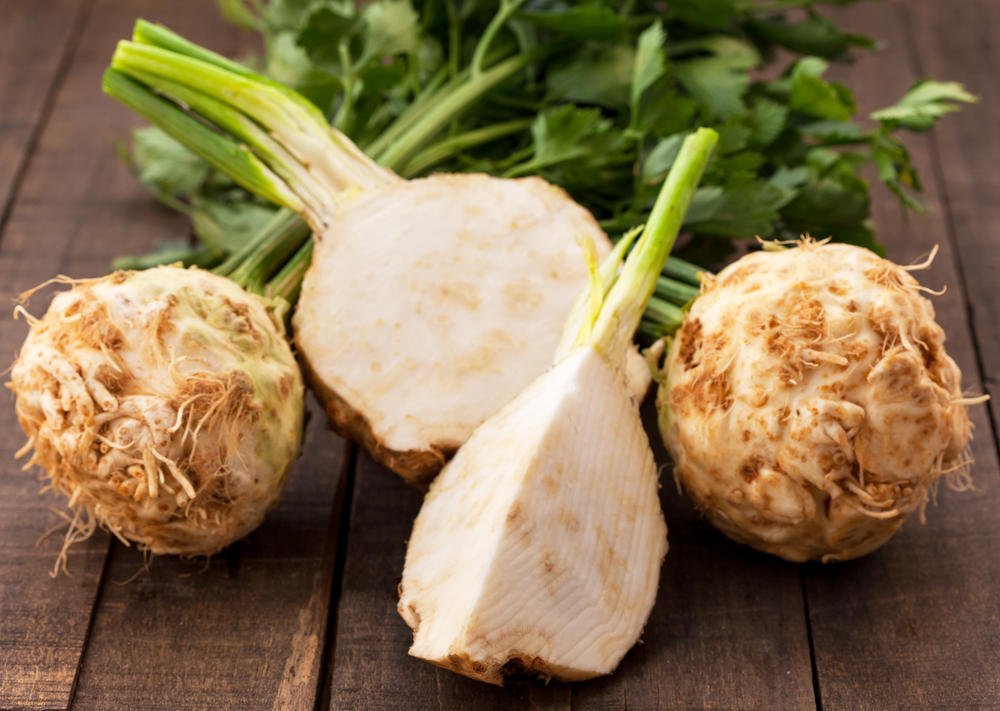
All varieties of celery root crops are more late-maturing — 140-190 days, and they should be grown only through seedlings.
Leaf celery
Leafy celery is cultivated to produce vitamin-rich aromatic leaves throughout the summer and autumn period, but it does not have a developed root.
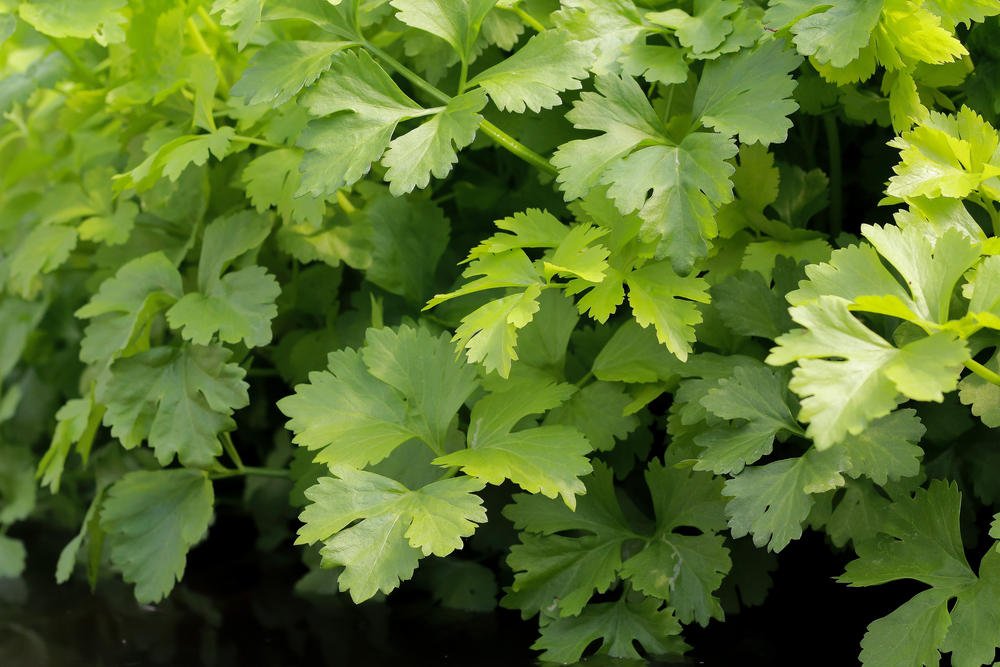
Green or Pascal celery
This celery is grown on fleshy petioles, the thickness of which reaches 4-5 cm (1.6-2 inches). Since it does not form the leaf root of celery, only the leaves and petioles are eaten.
